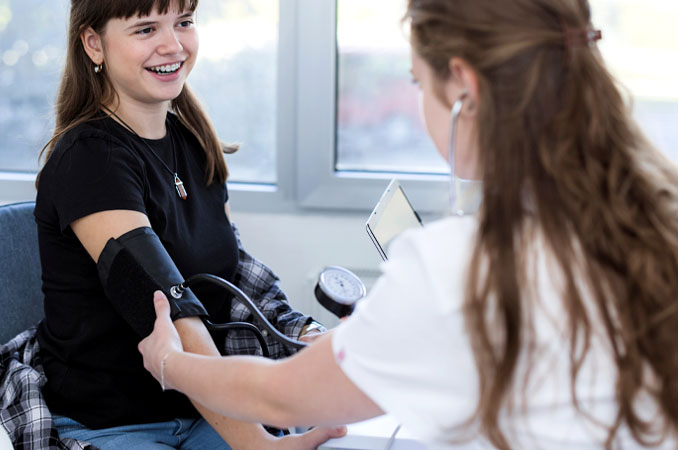Physical Inactivity is a Strong Risk Factor for Severe Covid-19 Outcomes
A study was recently conducted to determine if physical activity levels impact the outcomes of patients who test positive for COVID-19. The study analyzed whether the patient’s physical activity or physical inactivity prior to the pandemic was linked to hospitalizations, admission to the ICU, or resulted in death after contracting COVID-19. Patients were grouped in one of three categories for their physical activity level:
Consistently Inactive = 0 to 10 minutes a week

Some Activity = 11 to 149 minutes a week
Consistently Active/Meeting Guidelines = 150+ minutes a week
The outcomes of this study are as follows:

Patients with COVID-19 who consistently met the recommended physical activity guidelines during the two years prior to the pandemic
had a significantly lower chance
of being hospitalized,
admitted to the ICU and dying compared to those who were consistently inactive.
Patients with COVID-19 who were somewhat active during the two years prior to the pandemic
had a reduced likelihood of hospitalization and death.
However, only being somewhat active as opposed to consistently meeting the physical activity guidelines still posed a substantially higher risk of hospitalization and death.
Physical inactivity proved to be a stronger risk factor for severe COVID-19 outcomes
compared to other variable risk factors such as smoking, obesity, diabetes, hypertension, cardiovascular disease and cancer.


We know physical activity has many benefits such as improving our quality of life and reducing health risks. But now, this study supports that meeting the recommended physical activity guidelines can drastically reduce severe COVID-19 outcomes.
Do not let the pandemic prevent you from meeting physical activity recommendations! All it takes is approximately 22 minutes a day of getting your heart rate elevated. See the chart and guidelines below to help you get started or increase your physical activity in order to meet the standards that are recommended.
How much physical activity should I get?
| Type | Time | Intensity Level | ||||
| Aerobic Activity |
|
|
||||
| Muscle Strengthening |
2 or more days a week (involving all major muscle groups) |
Moderate to Vigorous-Intensity* |
*Moderate-Intensity = heavier breathing but still able to talk
Vigorous-Intensity = unable to hold a conversation
Safety and Avoiding Injuries
-
Be sure to consult with your physician prior to starting a workout program, especially if you have any concerns.
-
Always start slowly and gradually build up your physical activity. Walking is highly recommended as a starting point since it can be done anywhere and does not require a gym membership.
-
Incorporate stretching on a routine basis in order to regain or maintain mobility and to safely perform exercises that require greater flexibility.
-
Get shoes that fit well and provide the right amount of support and cushion. Make sure to wear comfortable, breathable clothing as well.
-
Seek guidance from a fitness professional! This can also help to ensure you are using proper form and technique while performing exercises.
-
Choose activities you enjoy and that are appropriate for your current fitness level and goals.
-
Find an accountability partner.
-
Avoid being sedentary as much as possible (a body in motion stays in motion).
-
Join a class! Many exercise classes are now offered virtually so you can participate at home with minimal equipment. You can also download apps that include fitness plans and workouts that are best suited for your goals.




This study was conducted at Kaiser Permanente Southern California (KPSC). Patient selection was narrowed down to 48,440 participants who met the following criteria:
Ages 18 and older (average age of 47)
Mix of demographics/backgrounds
Tested positive for COVID-19 from January 2020 to October 2020
Enrolled in the KPSC healthcare system for at least 6 months prior to testing positive
-
At least 3+ outpatient visits between March 2018 and March 2020 with an exercise vital sign (EVS) documented
- EVS = trained medical assistant or nurse asks the patient questions about their physical activity habits over the previous two months or more
Resources
https://bjsm.bmj.com/content/early/




 Women's Health
Women's Health Eat Healthy
Eat Healthy Exercise
Exercise Health & Wellness Articles
Health & Wellness Articles